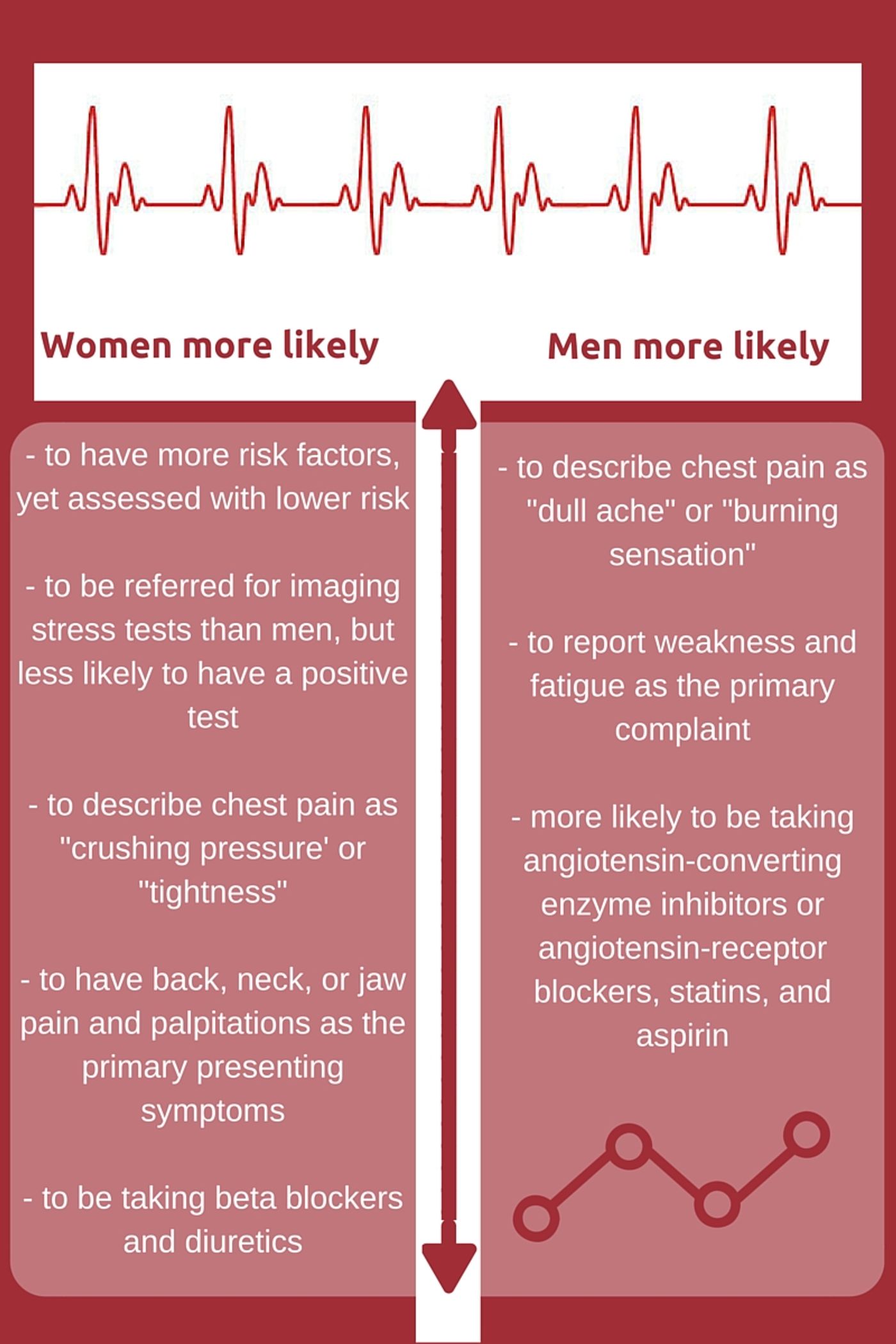Both men and women with no previous history of coronary heart disease present the same symptoms during their first visit to the doctor with a suspected diagnosis of coronary heart disease: chest pain and shortness of breath. A new study from the Duke Clinical Research Institute at Duke University Medical Center has shown the stark differences between diagnosis and risk assessment for this condition in female versus male patients.
"Our findings suggest there might be need for heart-health resources specifically aimed at women,” said lead author Kshipra Hemal, PhD.
The Duke study, called the Prospective Multicenter Imaging Study for Evaluation of Chest Pain (PROMISE), included more than ten thousand patients, equally male and female, with suspected coronary heart disease, with the pending diagnosis being their first of the condition.
In addition to the contrasting observations included in the infographic, the study showed that essentially equal amounts of men and women in the study complained of chest pain during the initial meeting with their physician. In addition, although women more more likely than men to report issues like depression, sedentary lifestyle, and family history of heart disease, apparently “commonly used predictor models” did not include these factors.
PROMISE was one of the first studies to focus on the diagnosis and risk assessment differences between men and women without an existing diagnosis of heart disease.
"Establishing a diagnosis is arguably more difficult among these patients,” said senior author Pamela Douglas, MD. “Our findings should help clarify that there are differences between men and women that we need to take into account."
The study was recently published in the
Journal of the American College of Cardiology, Cardiovascular Imaging.
Source:
Duke University Medical Center









